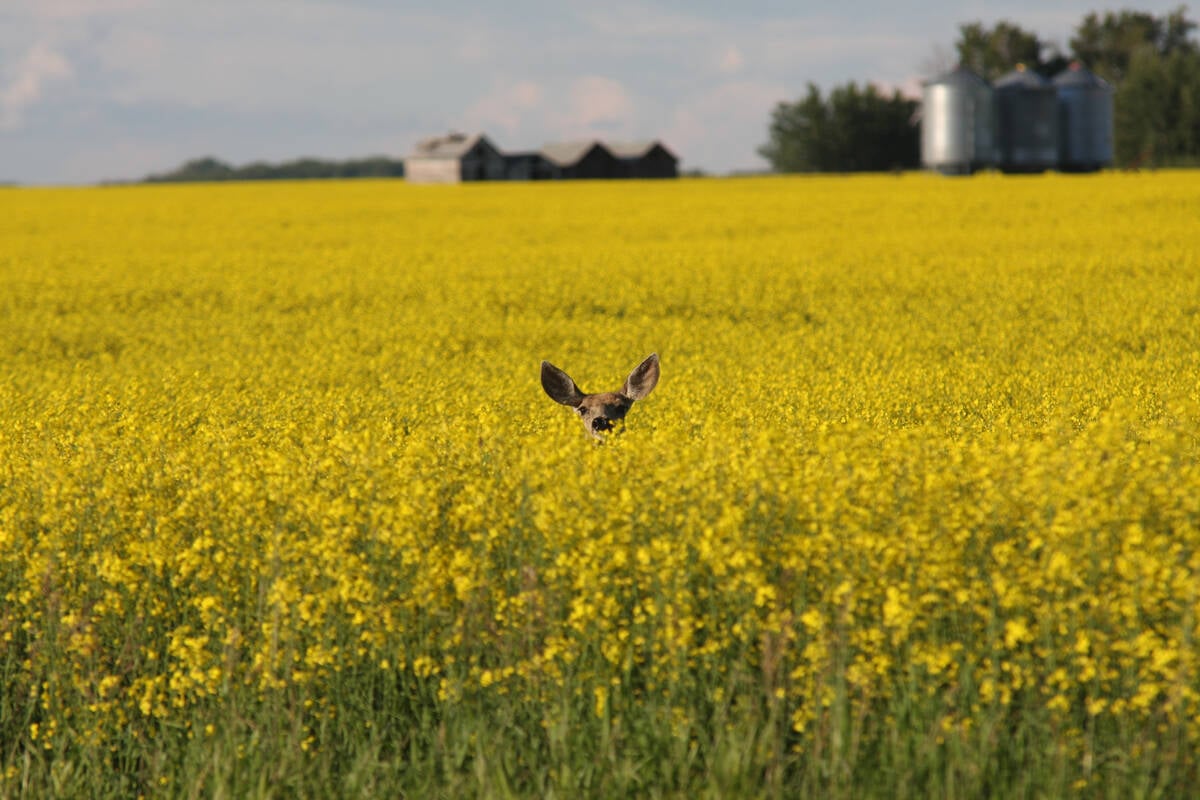MELITA, Man. – It was the sight of a perfectly good auction facility sitting idle on the edge of a struggling town that goaded residents into action two years ago.
But it hasn’t been easy for the co-operative they formed to drag the defunct business out of the grave.
The Border Auction Mart facility had been idle for several years and local cattle producers had become accustomed to driving the extra distance to auction facilities in Pipestone, Virden and Brandon.
Even in the years it was operating it had a history of instability. Built in 1971, the auction mart was leased out when its owner Jim Downey entered provincial politics in 1977.
Read Also

Drones now used to assess wildlife crop damage in Saskatchewan
Wildlife damage in Saskatchewan crops is now assessed by drones and artificial intelligence.
Since then, successive lessees – including Manitoba Pool Elevators – have decided it wasn’t worth the effort maintaining the service. In MPE’s case, there was even less incentive because they owned the competing facilities in Virden and Brandon.
But for local residents, there were some compelling reasons to try and revive the business. They saw the empty building as one more nail in this community’s coffin, and one more reason for young people to leave home for good.
“The biggest reason we support it is it’s just one more business in town that our kids can get work at,” said Garry Serruys, a local cattle producer and member of the board of directors.
An auction mart is the kind of business that brings people to town, where they frequent other businesses. Several of the auction co-op’s members are also owners of businesses in Melita.
Keith Line, a farmer who also sits on the board, said the community has seen a noticeable difference since the co-op bought the facility and resumed operations two years ago. “One restaurant owner I talked to in the spring said his business was up even the day before (sales),” Line said.
It has been a job-generator – with one full-time manager and several part-time employees. And on sale days, it’s a senior’s drop-in centre of sorts.
Serruys said cattle producers in the area are profiting from the local sale yards.
Its biggest selling point is convenience – less distance to haul. Members have been building on that theme by installing a drive through unloading chute – a big hit with farm wives pressed into occasional service hauling cattle into the sale.
And provided the facility can bring in the buyers, which it has been doing, there is an advantage to marketing cattle through smaller sales. They are sold more quickly and there is less stress and shrinkage on the cattle, Serruys said.
Their progress has been slow but steady – and heavily reliant on volunteer help from the membership. The facility increased its cattle handle by a third last year to 12,000 head. It went from a $31,000 deficit in its first year to showing a small profit on its operations.
But for manager Clair Vinck, it’s just a question of time.
Producers won’t come back until they know the facility is going to stay. “If we can establish the market and run it successfully for a few years, I think the producers will realize we’re going to be here for awhile.”














